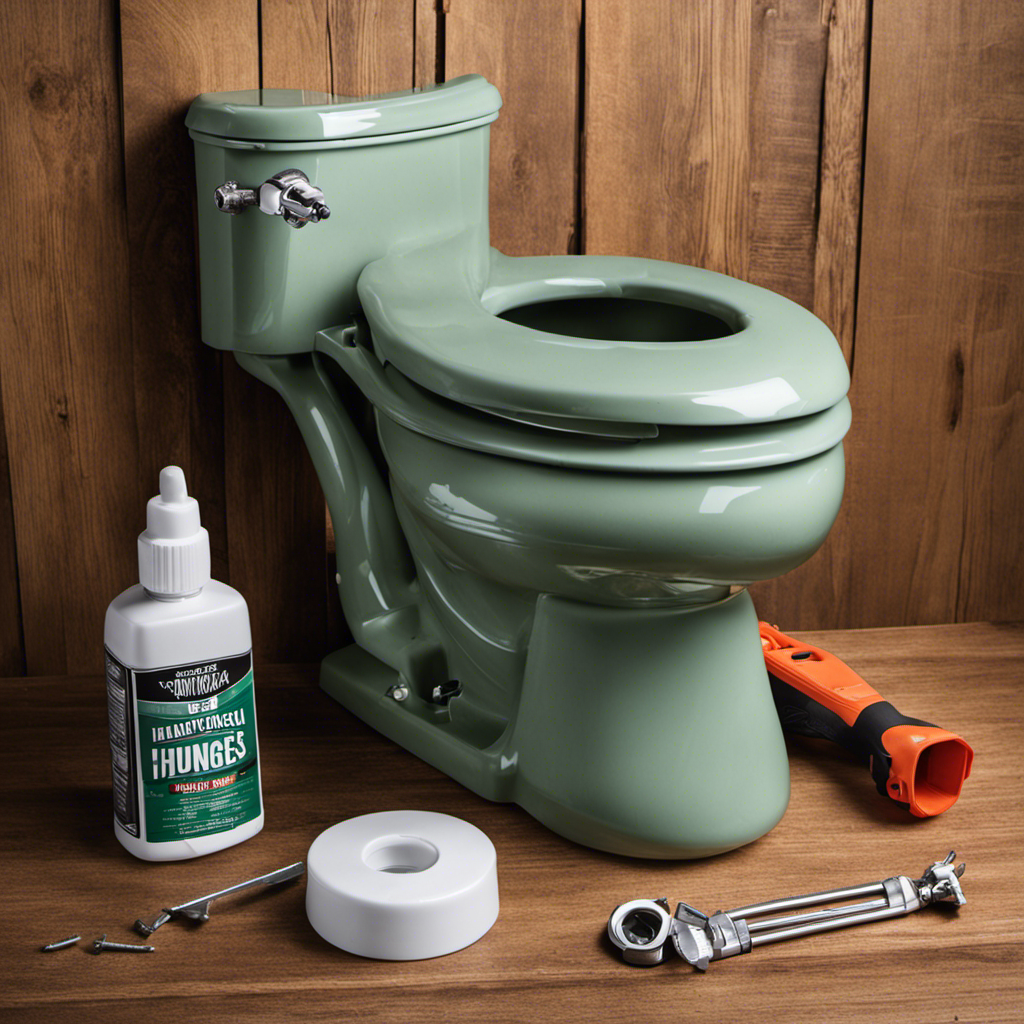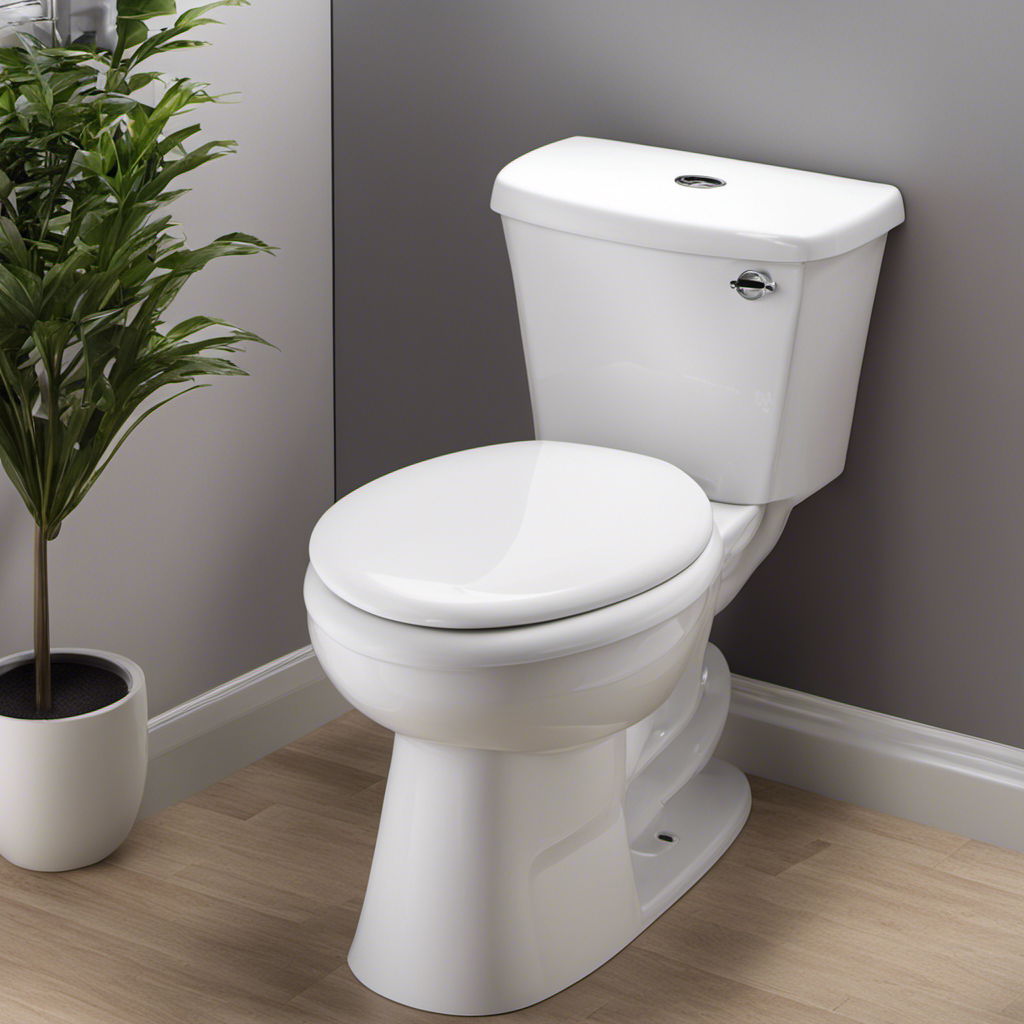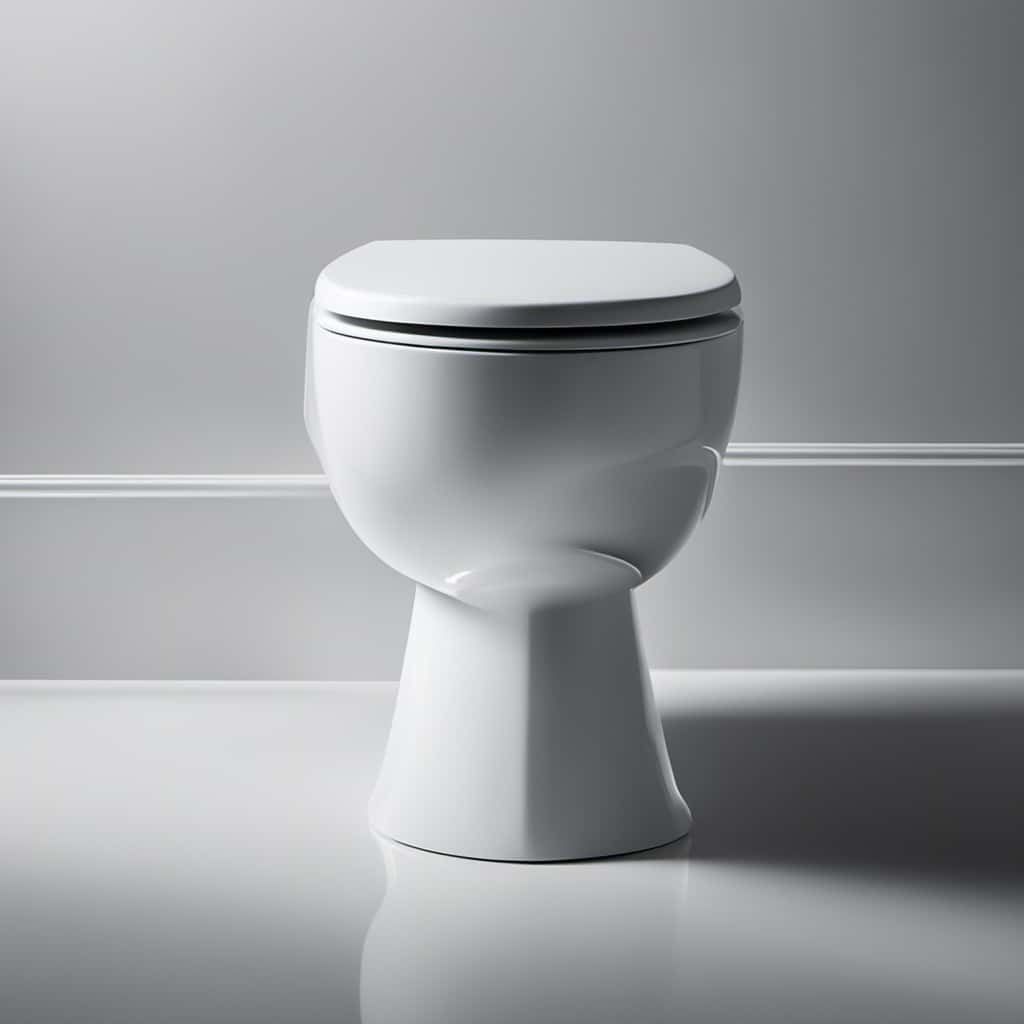As I sat on my wobbly old toilet seat, I realized it was time for a change. So, I gathered my tools and materials, determined to install a new toilet seat myself.
In this step-by-step guide, I’ll show you how to:
- Remove the old seat
- Prepare the toilet bowl
- Install the shiny new seat
With just a few simple steps, you’ll have a sturdy and comfortable throne to enjoy. Let’s get started!
Key Takeaways
- Choosing the right toilet seat involves considering the shape, size, style, and material.
- Safety precautions include turning off the water supply, wearing protective gloves, and placing a towel or newspaper on the floor.
- Thoroughly clean and disinfect the toilet bowl before installation.
- Proper cleaning techniques, such as using mild soap and water, are important for maintaining hygiene and prolonging the lifespan of the seat.
Gathering the Necessary Tools and Materials
You’ll need a screwdriver and pliers to gather the necessary tools and materials for installing a new toilet seat.
Before you begin, it’s important to choose the right toilet seat. Consider the shape and size of your toilet bowl, as well as the style and material of the seat.
Once you have the tools and materials ready, remember to take some safety precautions during installation. Make sure to turn off the water supply to the toilet and wear protective gloves. It’s also a good idea to place a towel or old newspaper on the floor to catch any water or debris that may fall.
With all the necessary tools and precautions in place, you’re now ready to remove the old toilet seat and move on to the next step.
Removing the Old Toilet Seat
After removing the old toilet seat, it’s important to carefully dispose of it. Proper disposal of the old toilet seat is crucial to ensure environmental safety and hygiene.
Many people encounter common problems when removing an old toilet seat, such as rusty bolts, stripped screws, or stuck hinges. To successfully remove the seat, follow these step-by-step instructions:
-
Gather the necessary tools: adjustable wrench, screwdriver, and pliers.
-
Locate the bolts that secure the seat to the toilet bowl.
-
Use the adjustable wrench to unscrew the nuts on the underside of the bolts.
-
If the bolts are rusty, apply a lubricant like WD-40 and let it sit for a few minutes before attempting to unscrew.
-
Once the nuts are loosened, use the screwdriver to remove the screws or hinges.
-
Carefully lift and remove the old toilet seat.
-
Dispose of the old toilet seat in accordance with local regulations.
Preparing the Toilet Bowl for Installation
To prepare the toilet bowl for installation, make sure to thoroughly clean and disinfect it. Start by removing any existing toilet seat and cover. Use a mild cleaner and a toilet brush to scrub the inside of the bowl, paying special attention to the rim and under the rim where bacteria often accumulate.
Rinse the bowl with clean water and wipe it dry with a cloth.
Next, adjust the toilet seat hinges. Most toilet seats come with adjustable hinges that allow you to position the seat properly. Use a screwdriver or wrench to loosen the screws on the hinges and adjust them to the desired position. Make sure the seat is level and centered before tightening the screws.
Once the toilet bowl is clean and the hinges are adjusted, you are ready to install the new toilet seat.
Installing the New Toilet Seat
Once you’ve cleaned the toilet bowl and adjusted the hinges, it’s time to attach the new seat.
Installing a new toilet seat is a simple process that can be done in just a few steps.
First, make sure you have selected the right toilet seat for your toilet. Measure the distance between the hinge holes on the bowl to ensure a proper fit.
Next, place the seat onto the bowl, aligning the hinge holes with the holes on the bowl. Insert the bolts into the holes and secure them with the nuts provided.
Tighten the nuts until the seat is secure, but be careful not to overtighten and crack the bowl.
Finally, check that the seat is level and adjust if necessary.
And there you have it, a new toilet seat installed and ready for use.
Testing and Finishing Touches
Now, you can check if the toilet seat is secure by gently sitting on it and adjusting the position if needed. To ensure a comfortable and safe experience, it is crucial to choose the right toilet seat design that suits your preferences and needs. There are various options available, including standard, elongated, and bidet seats. Consider factors like size, material, and additional features such as soft-closing mechanisms or heated seats. Additionally, proper cleaning techniques are essential to maintain hygiene and prolong the lifespan of your toilet seat. Use mild soap and water to clean the seat regularly, avoiding abrasive cleaners that could damage the surface. Remember to thoroughly dry the seat to prevent any moisture buildup. By following these steps, you can ensure a secure and functional toilet seat for years to come.
| Pros | Cons |
|---|---|
| Durable and long-lasting | Limited color options |
| Easy to clean | May be more expensive |
| Comfortable | Limited availability |
Conclusion
In conclusion, installing a new toilet seat is an easy and straightforward process that can be done by anyone with basic DIY skills. By following the step-by-step instructions and using the necessary tools and materials, you can quickly and efficiently replace your old toilet seat.
With a few simple steps, you can transform the look and functionality of your bathroom. So, why wait? Grab your tools and get ready to enjoy a fresh and stylish toilet seat in no time!










